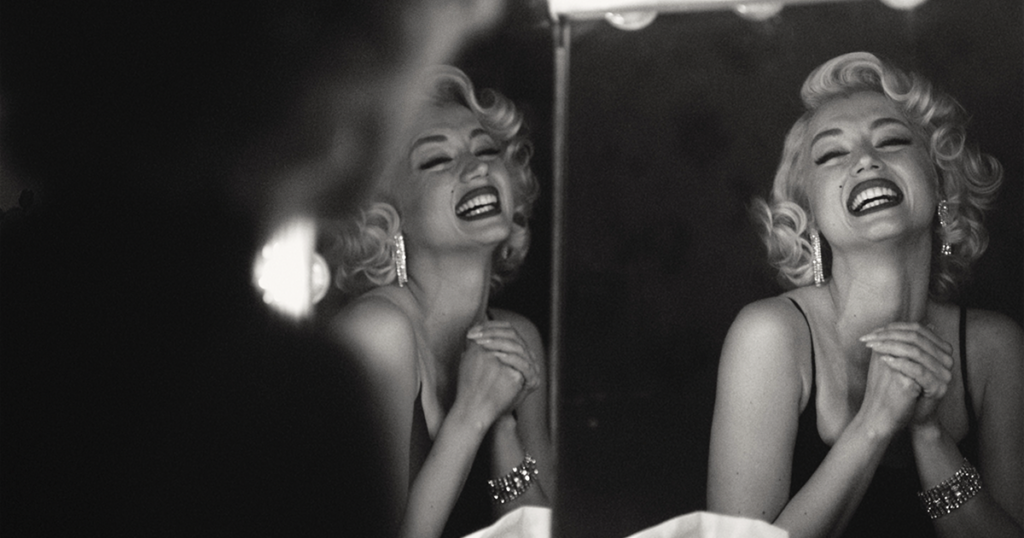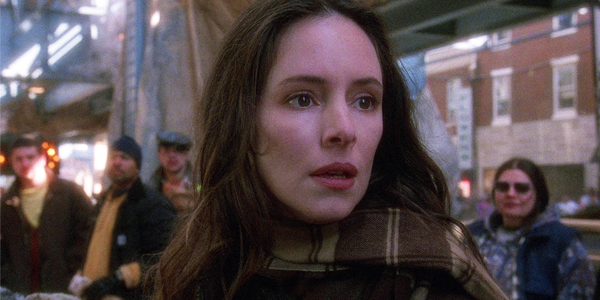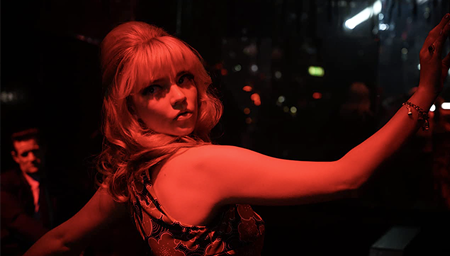
review | Blonde
ALSO ON CINELUXE
Sign up for our monthly newsletter
to stay up to date on Cineluxe
This lurid take on Marilyn Monroe’s life sometimes hits the mark but just as often wallows in the muck
by Roger Kanno
October 5, 2022
Andrew Dominik’s Blonde received a standing ovation after its premiere at the Venice International Film Festival on September 14. And while it has a striking visual style and a mesmerizing performance by Ana de Armas starring as Marilyn Monroe, this sensationalized depiction of the iconic film star’s life will not suit everyone’s tastes. Available on Netflix since September 30, it is the first film produced by the streamer to be given an NC-17 rating. It can be difficult to watch with many scenes depicting Monroe’s troubled life as she struggles to deal with the less desirable aspects of fame and the predatory people who surround her.
At times, it feels as though the film is exploiting her legacy more than it’s honoring her memory. However, Blonde does elicit a sense of admiration and sympathy for Monroe, even though it can be both voyeuristic and exploitative. There are a lot of seedy and sensationalistic events depicted whose veracity could be questioned, but whether they are accurate or not is less important than recognizing the toll fame extracted from the intelligent but naïve Norma Jeane Mortensen in her transformation into the screen icon Marilyn Monroe. Bobby Cannavale and Adrien Brody provide excellent supporting performances as the Ex-Athlete and the Playwright, but it is de Armas’ inspired performance that is the center of this film.
Dominik’s bold vision utilizes surreal, dreamlike imagery; slow-motion; closeups; and several different aspect ratios ranging from 1:1 to 2.39:1. Most of the film is composed at 1.37, like many of Monroe’s early films, but I found the constantly changing ratios to be distracting. The film also alternates between color and black & white with perplexing frequency. The color shots, especially those towards the beginning featuring a very young Norma Jeane and her mother are slightly washed-out with a yellow-sepia tinged character. This conveys the stark and unfulfilling nature of her austere childhood, and although later color scenes feature slightly more color saturation, they still retain a grim, subdued appearance.
Dolby Vision color grading is used more effectively in scenes incorporating actual footage from Monroe’s films, with vibrant colors that really pop in contrast to Norma Jeane’s real life away from the Hollywood glitz. When the “Diamonds Are a Girl’s Best Friend” scene from Gentlemen Prefer Blondes is projected in a theater during a gala screening, de Armas is digitally composited into the scene and the gorgeous bright fuchsia of her dress contrasted by the rich, dark blacks of the men’s tuxedos and the blood-red backdrop is visually stunning. This is juxtaposed with the more muted colors in the wider shots of the theater and the audience members as Monroe exclaims, “That thing up on the screen, it isn’t me.”
Black & white scenes also occasionally exhibit a slightly washed-out quality, but dreamlike sequences such as the recreation of the subway-grate scene from The Seven Year Itch looked absolutely gorgeous. There were deep, inky black backgrounds that beautifully framed Monroe’s bright white dress moving in slow motion with mesmerizing detail in the curves of its flowing fabric and the perfectly and crisply defined pleats.
Audio is presented in Dolby Atmos and is quite good, with a wide stereo soundstage for music and effective use of all channels to provide a pleasing ambience. The surround and height channels are used occasionally for discrete Foley effects such as the screams of patients in the hallways of the state hospital where Norma Jeane visits her ailing mother. And when she and her mother flee a forest fire in her childhood, the crackling embers of the fire are all around them, but the overall effect, even with the atmospheric music, is not as enveloping and holographic as could be expected.
Writer and director Dominik’s liberal use of artistic license and unorthodox filmmaking techniques in telling the story of the legendary Marilyn Monroe is risky. As often as it works, there are equally as many times that it comes across as lurid and cringey. Blonde is sometimes beautiful to look at, with a heroic performance by de Armas, but its content is bleak and disturbing.
Roger Kanno began his life-long interest in home cinema almost three decades ago with a collection of LaserDiscs and a Dolby Surround Pro Logic system. Since then, he has seen a lot of movies in his home theater but has an equal fascination with high-end stereo music systems. Roger writes for both Sound & Vision and the SoundStage! Network.
PICTURE | Frequently alternating between color and black & white, the film mostly has a washed-out, subdued look, with Dolby Vision most effectively deployed in the scenes that use footage from Monroe’s actual movies
SOUND | The Atmos soundtrack is quite good, with a wide stereo soundstage for music and effective use of all channels to provide a pleasing ambience
© 2025 Cineluxe LLC





